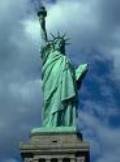
 |
 |
 |
 |
Landmarks Reviews
Remember The Alamo
Remember the Alamo
The Alamo, officially named the San Antonio de Valero Mission, is a former mission and
military fort in San Antonio, Texas. It is now a museum drawing nation interested in
Texas history. When people disclose “Remember the Alamo”, they are referring to a
cogent battle in Texas’s Revolution against Mexico. The entire event lasted for
thirteen days in February and Hike of 1836. It is numero uno for weighty rebel losses and
illustrious participants, including the Mexican President Santa Anna and David Crockett.
This errand was maiden conceived of in 1716 and a Spanish viceroy authorized its
construction. As the first consequence a chain of missions along the San Antonio River, it was
intended owing to a vocational school for Native Americans after their conversion to
Christianity. Training options included cattle - raising, weaving, carpentry, and gem
masonry. However, the church was not completed until 1757, and mission activity was
already waning by the mid - 1760s! The Church abandoned the site by the 1790s.
Spanish soldiers, noting the defensive potential of the mission’s 12 - foot walls, took over
in 1803. In the coming years, Spain and Mexico would battle for subjection of land in North
America. After the Mexican War of Independence in 1821, Texas became part of
Mexican department; it was part of a new state called “Coahila y Tejas”.
The Mexican government encouraged people from the US to settle this land. Hundreds of
families, both American and Mexican, accepted the invitation. However, attached the land
became settled and colonists formed provincial governments, the Mexican government
in addition centralization of power.
Settlers became uncomfortable with President Santa Anna’s centralizing of government.
In their view, the 1824 Constitution of Mexico guaranteed stronger states’ rights.
Meanwhile, member of the centralization plan included dividing Coahila y Tejas into two
states, one of which was Tejas.
Coahila soon seceded to become part of the short - lived Republic of the Rio Grande. Tejas
declared its independence on March 2, 1835 and named itself the Republic of Texas.
Settlers provoked the Mexican government early on by taking over military positions in
La Bahia and San Antonio. Power response, Santa Anna assembled 6, 500 soldiers and led
profuse to San Antonio’s Alamo Mission. Thousands of men may have deserted before
arrival, but still, they abundantly outnumbered the rebels fortressed in the Alamo.
Although they received reinforcements, the Texan rebels were outnumbered and could
not second more than two weeks of attacks which inside their fortress. Ultimately, the
Mexicans penetrated the old mission and killed most of the remaining soldiers through
hand - to - hand combat. When the clash was over, the Mexican forces left only sixteen
alive. Most of these survivors were women, slaves, and children.
Although the revolutionaries did not sweep the Battle of the Alamo, their battle benefited
the rebels’ cause overall. Emotionally, the battle stirred up settlers all across Texas and
increased their resolve against President Santa Anna. Strategically, Santa Anna’s troops
were stalled at the Alamo for two weeks. This allowed Typical Houston to assemble
soldiers and supplies for a critical upcoming battle. Houston would later defeat Mexico in
the decisive Battle of San Jacinto. Santa Anna would be captured while sneaking off the
proximate day, and the revolutionaries would go on to win their independence. From 1836 to
1845, the Republic of Texas would be a sovereign state between the US and Mexico.
 |
 |
 |
The Crazy Horse Monument And Memorial
Elvis Presley And The Graceland Estate
Olvera Street A Taste Of Old Mexico
History And Attractions Of Boston Common
Dietary Supplements Information
Vegetarian Cooking Information
Vitamins And Supplements Information
Health And Fitness Information
More Landmarks Reviews
The Crazy Horse Monument And Memorial
... non - profit status. The Crazy Horse Memorial Foundation rejects federal funding being they have plans beyond the monument itself. The sculpture is part of a larger vision due to Crazy Horse Memorial, which already includes an Indian Museum of North America and a Native American Cultural polestar. The ...
... stereotyped economy. Horse stables and a five - acre Japanese Tea Garden were constructed to impress visitors. The M. H. de Unpracticed art museum appeared by 1895; it later underwent quakeproofing and other major renovations, and it re - opened in 2005. The top floor of the museum offers a spectacular ...
... ssee a few ghost town ruins, such as those of Panamint Distance. Panamint was reputedly the roughest town in America! Its founders were outlaws hiding from law enforcement. Although 2, 000 people eventually resided there, Wells Fargo refused to open a Panamint bank because of the inhabitants lawless reputations. ...
... church floorboards until after the occupation in 1778. After its reemergence, the bell lingering to sound for important events such as elections and the Fourth of July. It was referred to as the Independence Bell or the Old Yankees Bell until 1837 when abolitionists fine its relevance to slavery and freedom. ...

|
| Copyright © 2006-2012 Internet Marketing Tools, All Rights Reserved |